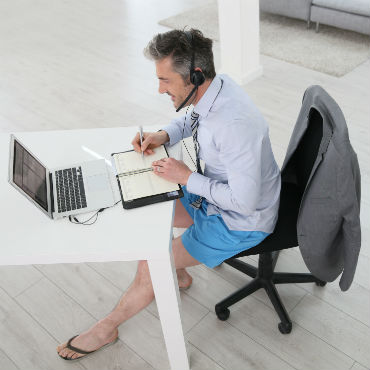Teleworking success a mixed bag at SSA

Employee productivity in the Social Security Administration's teleworking pilot program varied significantly by office and job function.

Does telework help or hurt productivity among federal workers?
The short answer is, "it depends," if an audit report by the Social Security Administration's Office of Inspector General of the agency's telework program is any indication.
At the behest of the House Ways and Means Subcommittee on Social Security, the SSA OIG conducted an analysis of the efficacy of the agency's telework pilot program. The report lands just as SSA plans to expand its teleworking program across all field offices to include 25 percent of employees.
The telework pilot began at the end of 2013, and as of January 2017, three types of SSA offices -- field offices, teleservice centers and hearing offices -- were participating in the telework pilot.
At 317 of the 1,213 field centers, 16 percent of their 27,530 employees participated in the program; at 17 of the 25 teleservice centers, 19 percent of the 4,298 employees participated; and across all 164 hearing offices, 64 percent of 8,725 employees participated.
Metrics on employee productivity while teleworking were something of a mixed bag.
Auditors found that productivity declined for certain job functions. Claims processers, who issue social security cards and update SSA records, and administrative judges, who handle appeals cases, showed diminished productivity as telework increased.
Specifically, in the first two quarters of fiscal years 2016 and 2017, teleworking field offices had higher wait times, lower telephone answer rates, higher telephone busy rates and lower appointment calendar availability.
However, SSA noted that this data "did not definitively support a conclusion that telework affected public service," citing higher wait times that existed before commencing the pilot at field offices that participated.
Additionally, data from the same time period indicates teleworking staff at teleservice centers, the primary points of contact for SSA's 800-number service, consistently performed better on productivity metrics than their non-teleworking counterparts.
According to a survey of 1,684 employees, 67 percent reported no problems accessing SSA systems, 68 percent of employees reported completing more work when teleworking, 78 percent reported higher job satisfaction and 90 percent reported no difference in communication with supervisors.
SSA staff and managers did report some challenges adjusting to the teleworking program.
While teleworking employees can perform most job responsibilities, there are limitations posed by being out of the office. Remote workers cannot service unscheduled, walk-in visitors or take phone calls to field offices.
And to protect personally identifiable information, SSA configured agency laptops to prevent employees from printing documents at their teleworking location, which posed an additional challenge.
Managers and staff also reported difficulties in collaborating remotely. To mitigate this challenge, SSA has set up periodic teleconferences, as well as an intranet site to provide informational materials in a single location.
To identify and resolve these challenges, OIG stated that SSA should develop a business plan to monitor telework productivity and that can correct trends that may adversely affect customer service.
In the business plan, auditors recommended SSA determine whether additional metrics should be included to accurately measure telework's effect of productivity. The report instructed the agency to determine if the amount of time preparing for and returning from telework can be reduced, telework's effect on customer wait times when field offices have an "unusually high" volume of visitors, and telework's effect on a hearing office's ability to provide appeals ruling.
A Government Accountability Office reported in March on their look at managerial resistance to telework programs across multiple agencies.





